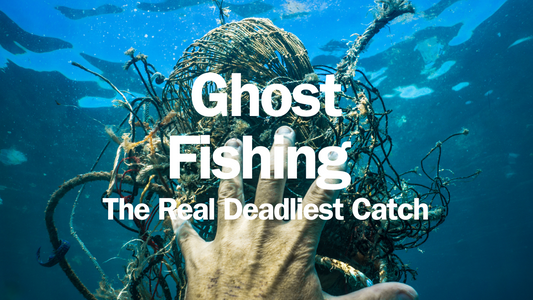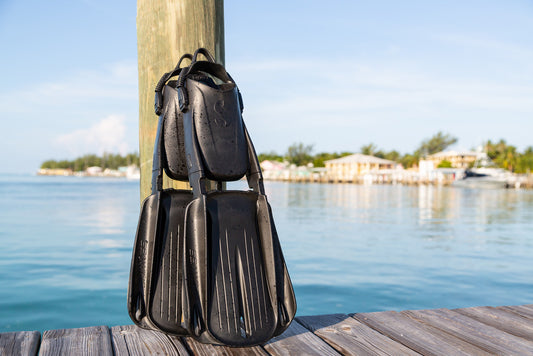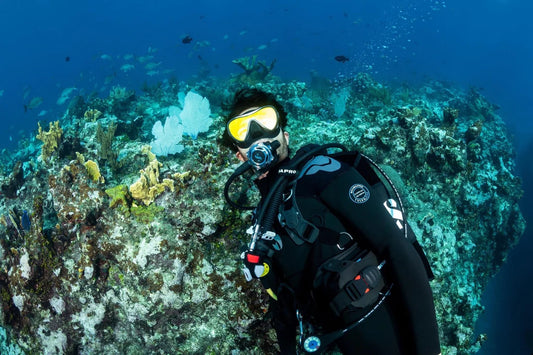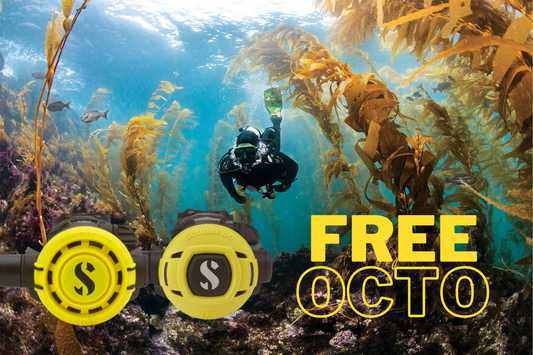
I'm very lucky in that I seem to have a face that gets along with almost any mask despite my ill-groomed facial hair and the latest TUSA Freedom Ceos Dive Mask was said to have a super-flexible silicone skirt so fit was never a worry.
They say that there are two types of people past middle-aged. Those who wear glasses and those who never read books. What was a worry was the fact that in common with many people over the age of forty-five (and I'm well over that) my eyesight is no longer as good as it was. Similarly, many people suffer short-sightedness from birth and wearing a mask in conjunction with contact lenses can inhibit the freedom to take it off underwater. I still remember the time it took me to feel carefully along the bottom of a swimming pool in a desperate search after one of my trainees lost a contact lens during a mask removal exercise. Naturally, I found it. A good instructor as ever, I wasn't ever going to let anything spoil my trainee's day.
When it comes to choosing a mask, if you are so afflicted by imperfect vision, you'll want a mask that will take prescription lenses. It's a much better option than battling with contact lenses underwater. Now, I might add that you may not need lenses that completely match your prescription since even the clearest seawater is quite poor optically but an approximation with do and go a long way to getting you the maximum enjoyment from getting your head underwater.
If you want to be good at something, you've got to practise. I took home my shiny new mask and a set of lenses with the intention of installing them in the mask. I've worked in the diving industry for a generation and yet I baulked at taking the mask apart. Even a phone call to the distributor (who sent me a special tool for the job) left me pondering how to get the old glasses safely out. It's simply that every mask seems to be different and I'd only done this about once every five years. If I had been more clever, I should have let Steve at Mike's Dive Store do it for me. He does it virtually every day.

Well, I managed to successfully install the new lenses at the end. I then merely had to get rid of the inevitable and invisible silicone deposit that gets on to the inner side of the mask glass during manufacture and causes that annoyed fogging problem. The safest way too do that it to rub a bead of old-fashioned white toothpaste around the surface to gently abrade the silicone deposit off. Otherwise, it gives an edge for tiny droplets of moisture to cling to, precipitated out of the damp air inside the mask while you are using it.
After that, each time before you go under water, simply spit on the inner side of the mask glass and rub the saliva around before giving it a rinse in seawater. Don’t bother with packaged products that promise to do this job. Spit is free and you’ve got plenty of it and I’d hate to think where the proprietary product is sourced.
When it comes to choosing a skirt, the choice is usually between clear silicone or opaque silicone. Some divers swear that a mask with a black skirt gives them better vision. I suggest that a transparent skirt gives you a better feeling for what's around you. Just like driving a car and looking through the windshield, the side windows of the car don't destroy your forward vision but certainly make the car less claustrophobic. That said, some like to look like Zorro or Batman with a black-skirted mask and who am I to argue with that? My best advice is to get one that fits you well with lenses that suit your eyesight. Enjoy your diving or snorkelling.
John Bantin




